Nanking Cargo: Riches From the Orient
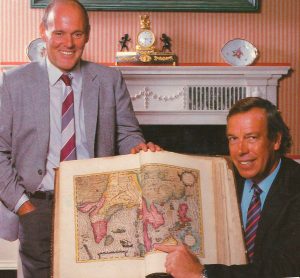
Photo of Michael Hatcher & Max De Rham
It’s the kingdom of power and awe where the winds wail, the gulls cry and the sea surges. Only the bold will brave it. Gales may blast it, rains may flood it and tides may churn it, but it is and always will be…the South China Sea.
Ask Michael Hatcher and he’ll tell you about raging storms, dark waters and pirates that he faced in an unforgiving environment unwilling to give up its treasure even to the bravest of souls. Hatcher never considered himself brave. Lucky perhaps, but not the daring swashbuckler portrayed in Hollywood productions. His demeanor, quiet, cordial and determined, was a perfect match for his line of work: Professional Treasure Hunter.
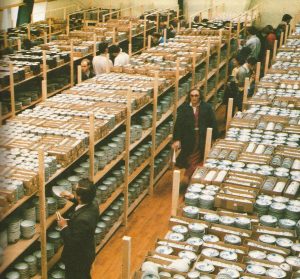
Christie’s Auction Drew 20,000 People
The South China Sea wasn’t unfamiliar to the Yorkshire, UK, orphan who grew up on a farm in the Australian outback. He picked up various jobs on land until age 27 when he bought his first boat. It took a lot of time and hard work, but by 1977 he had formed his own company and was salvaging scrap metal from sunken WWII vessels. Avoiding monsoons and standing up to modern-day pirates was standard operating procedure for the adventurer called “Hatch” by friends and crew.
Hatch greeted Lady Luck with a smile in 1983 when he stumbled upon a 17th century Chinese junk that went down on Admiral Stellingwerf Reef in the South China Sea. He and his crew salvaged more than 20,000 pieces of late Ming and Traditional Period Chinese porcelain that netted $2 million at Christie’s Auction House in Amsterdam. Hatch was ecstatic. Money to operate the boat, pay the crew and purchase high tech equipment was always a concern, but now he had the resources. Now he could make a mighty push in trying to locate the big “G.”
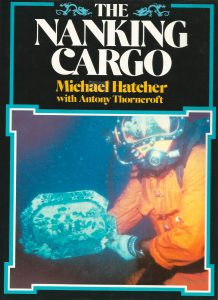
Cover of the Book, Nanking Cargo
The Geldermalsen, a Dutch East India company merchant vessel, sank in a storm in 1752. The 1,150 ton vessel was on a return voyage from Canton to Amsterdam laden with Chinese porcelain, tea, raw silk and gold. Accounts from the survivors verified the shipment along with records in Holland whose trade with Asia for two centuries was dubbed the Golden Age. Along with his partner, Max de Rham—an engineer skilled in high technology and marine surveys—Hatch researched the merchantman. Both agreed to begin the search in the area where the Chinese junk was found. Using satellite navigation, proton magnetometers and side-scan sonar, they swept a five mile perimeter, but came up empty handed. After two months of fruitless effort, Hatcher wanted to quit, but de Rham begged for one more day. Bingo! The very next day, May 11, 1985, the prize appeared on sonar—an image of a shipwreck showing mastheads, cannons and deck contours.
Hatch and de Rham were the first down and right off the bat found shards with the luster of cobalt blue beneath a ceramic glaze. Their expectations soared as pairs of dive teams uncovered crate upon crate of blue and white teacups, bowls, butter tubs, dinner plates, teapots and more. Serendipity kicked in when the divers realized the crates of porcelain had been cushioned upon impact by the bags of tea. More good fortune emerged when they recovered 127 gold bars in the captain’s cabin.
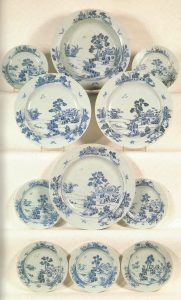
Sets of Porcelain Sold for Double the Expected Price
Diving conditions were hazardous. Silt swirled around as cargo was removed, forcing divers to work by feel. Large bags of tea leaves broke free from their containers prompting Hatch to declare, “It was like swimming around in a giant black teapot.” The 132-foot depth and dark waters were ominous. Using surface air supply, hoses had to be monitored and bottom time computed. Getting the bends was always possible, but the salvors were experienced divers who stressed safety first. Divers entered a decompression chamber after each turn on the wreck. Storms delayed progress and lookouts packing guns stood guard against interlopers. After 10 weeks of long hours and intense labor, a container ship arrived to haul off 1,400 cartons of the Hatch’s cache. Upon arrival in Holland, it took six people, working steadily for one month, to unpack, clean and stack more than 170,000 pieces of china.
The payoff came in April, 1986, when Christie’s of Amsterdam opened a five day auction of the “Nanking Cargo.” An official from Christie’s coined the name, Nanking, the main distribution center for Chinese porcelain shipped to Europe throughout the years. It had an appealing ring to it and helped prices soar beyond auction forecasts. More than 20,000 people attended the auction, many harboring a desperate desire to own a memento from this romantic treasure trove. An anonymous bidder paid $332,786 for a 144-place dinner setting, while a Swiss banker bought a pair of butter tubs for $15,275. A small stoneware jug went for $5,251. In all, the sale brought in $15.3 million, double the pre-auction estimates. Gold soared as well, netting a Midas touch that bordered on $2 million.
As for Hatch, the 45-year-old salvage entrepreneur, this was a happy moment, but one he never looked back upon. Like all steadfast adventurers, he went off searching for another wreck in the untamed South China Sea. When asked by a reporter to give up one of his secrets to success, he responded with one word: “experience.” His mantra throughout all of his exploits has been, “Experience is the best teacher.” That being the case, Hatch, the student, continues to earn straight A’s.
21 Comments
Submit a Comment
All Rights Reserved © | National Underwater and Marine Agency
All Rights Reserved © | National Underwater and Marine Agency
Web Design by Floyd Dog Design
Web Design by Floyd Dog Design
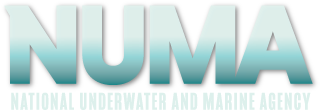
This is an amazing story. The Chinese porcelain is beautiful. Did Capt. Michael Hatcher find any more wrecks after this one? He is quite an adventurer.
Yes, Capt. Hatcher made another big discovery and several other smaller ones. He formed agreements with the Indonesian government, not only to dive on what he discovered, but to continue to search other areas as well. He was, in a way, like the late Mel Fisher of the Spanish galleon, Atocha, fame ($400 million worth of treasure) in that he would make a major discovery, and then go right out looking for another one. It was the thrill of the search that drove both of these famous salvors.
I have written a book on the early Singapore days of Mike Hatcher.,
My publisher wants his approval, if he is not dead.
Gosh, I don’t know where he is. You will have to do an online search. Keep a log of every place you search so you can show it to your publisher. Show him you tried hard to find Mr.Hatcher. If your book is published,let me know and I will purchase a copy. The Nanking Cargo is one of my favorite subjects. Good luck.
Do you know what happened to Max deRham?
I am Daye from NanKing city of China. I am very interested in Hatcher’s story.
Do you have more materials about his story?
Thank you very much!
Hi Daye:
I’m honored that you, all the way over in Nanking, China, have read my article. You will find all the information you need in Michael Hatcher’s Book, The Nanking Cargo. Go to Amazon Books and put in: The Nanking Cargo by Hatcher and you will find one for sale. At this time it is $10.63 American money, which is a very good buy.
Let me know how you do. Cheers, Ellsworth Boyd
Thank you Ellsworth!
Glad to see you reply somebody told me in order to get a high price,Hatcher salvaged nearly 1 million porcelains from NanKing cargo, but he broken 70% and threw back to the sea , only kept 230,000 porcelains to Christie’s auction.
Was it true?
Daye: Yes I think this is correct. The reason being: Why should he sell pieces of the porcelain at low prices when he had 230,000 complete pieces that drew high prices? When you get Hatcher’s book, you will see all the hardships he went through in order to retrieve the porcelain. It is amazing!
Thank you for your patient explaining, Ellsworth!
According to your suggestion, I have bought the book in Amazon.
I am curious why you are also interested in NanKing cargo?
Here is my contact information :
1934952457@qq.com
WhatsApp : 852-69594517
Wechat: 1934952457
Hope to contact you.
Actually, I’m interested in all shipwrecks since I am constantly writing about them. But Michael Hatcher’s obstacles in discovering and retrieving all of this beautiful porcelain is a bit different from the gold and silver treasures of the Spanish galleons. When you read Hatcher’s book you will see what I’m talking about.
Thank you. I wrote down your contact info. My email is: ellsboyd@aol.com Feel free to contact me there.
I used to be a tenant living on property that Michale Hatcher owned in Maui, Hawaii where he lived briefly. We were friends during his time here. He moved back to Australia in the early ’90’s. As far as I know, he still lives in Australia. I have seen advertisements on the internet in the years since then where he was looking for investors, etc. for other salvage efforts. Max also owns a home in Maui. He was involved in a tragic motor boat accident a few years ago and lost an arm. He splits his time between Maui and his native Switzerland.
Hi Tony: Many thanks for your comment. I remember reading that Michael Hatcher had a place in Hawaii at one time. I figured if he was still in good health, he would be planning another expedition. After Mel Fisher found the $400 million treasure of the Atocha, he went right on searching for another ship. I’m sorry to hear about Max. If you learn anything more about Hatcher’s adventures, please write. Many thanks, Ellsworth
My name is Captain Michael Hatcher and I would like to talk to the person who is wrote the book about me in the early days of Singapore if it is no problem you have my permission to pass in my email address loved your article well done kind regards Captain Michael Hatcher
Hi Capt. Hatcher: It is great to hear from you. I’m glad you liked my article. I enjoyed every minute of researching and writing it. You are my hero. Your discovery and salvage of the Geldermulsen is fascinating.
I do not have the email address for Jim Collins, the author who said he wrote a book about you. I suggest you go to ebay and search for it. If you don’t find it, then get a copy of any other book written by Jim Collins and then see who the publisher is and see if you can track down Jim Collins that way.
I am attaching your email address as you said I might: Captain.Hatcher@gmail.com
If I find any information I will contact you.
Best regards, Ellsworth Boyd
I worked for Geomex (Singapore) 1981 to 1987 as a hydrographic surveyor. This was Max de Rhams company. I was invited to be the surveyor on the 1986 search but it was on the basis – no pay but you get a % of the profit if anything is found. Hmm maybe I should have gone on it. Anyway it was a great job in Geomex and experience that I would never get in New Zealand. I went on to form the marine survey business in Trimble Inc for 35 years – again a great job. We had a Geomex re union in Singapore 2-3 years ago. Max could not attend but sent a message.
Very interesting Gary. You probably had some noteworthy experiences being in the marine survey business. I don’t know where Max is, but I will try to contact Capt. Hatcher and if he knows, I’ll get back to you. Cheers, Ellsworth Boyd
Thats is not Hatcher replying, he does not speak like that. Last heard of in the Philipines 2013, Article in the Durian Post & Sun Star- Google Michael Hatcher Davao…
He was in conflict with many, we have wondered also if he was alive..Read the TekSing & China’s new interest in that shipwreck, many are under the radar now.
I tried to email him, but it all came back.
A friend and myself met Mike Hatcher and Max De Rham in Singapore. We saw some beautiful jewellery made by Mike’s wife Guillen from broken pieces of the porcelain. We sailed with Max De Rham on his beautiful Cape North yacht from Singapore to Thailand. What a fascinating trip that was hearing all about the salvaging of the Geldermalsen. I’ll never forget it.,
I worked in Geomex – based in Singapore in the 1980’s. This was the company that Max set up and managed. We did hydrographic and seismic surveying in SE Asia. The discovery on the last day is true and amazing.